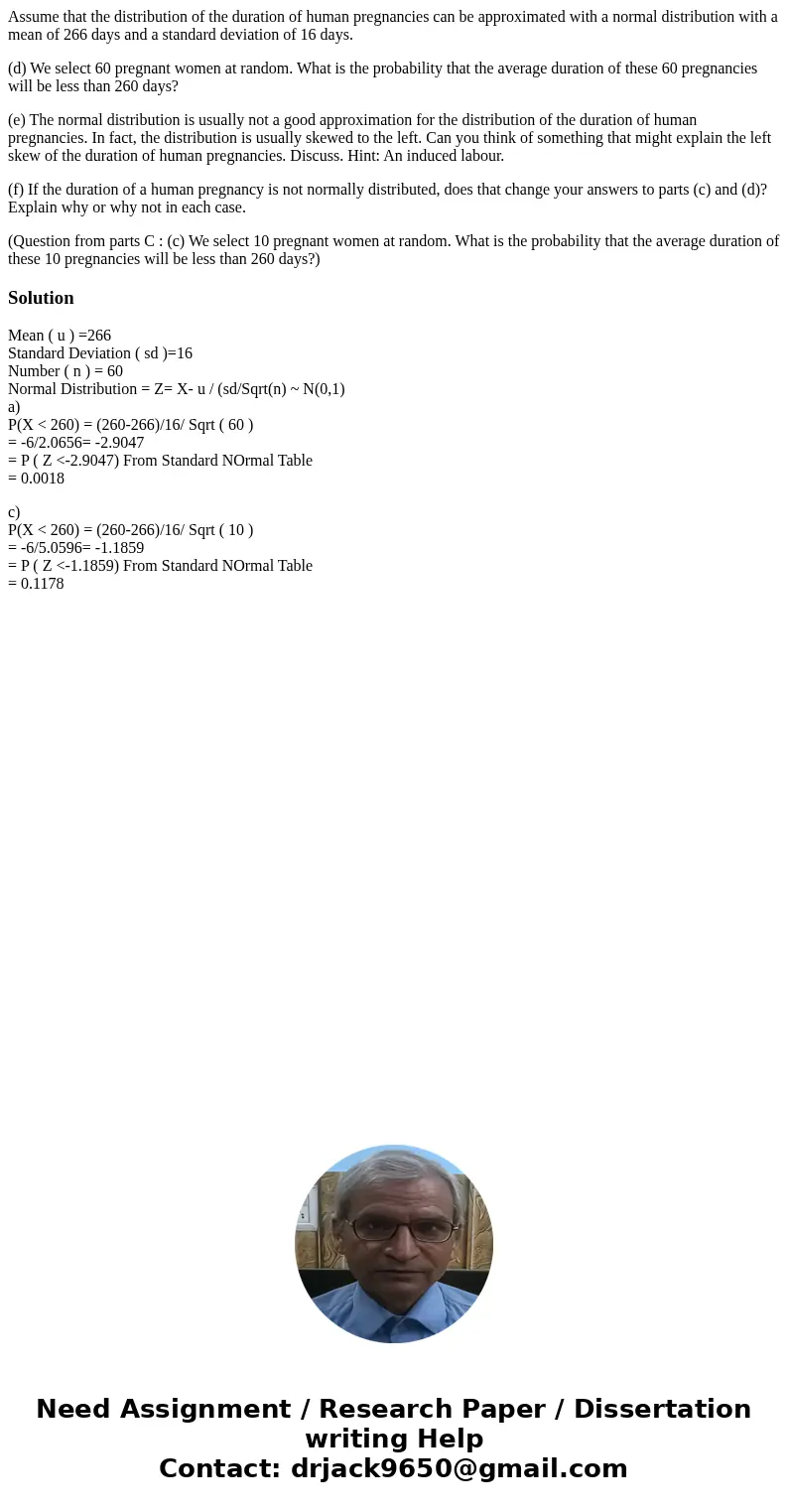Assume that the distribution of the duration of human pregna
Assume that the distribution of the duration of human pregnancies can be approximated with a normal distribution with a mean of 266 days and a standard deviation of 16 days.
(d) We select 60 pregnant women at random. What is the probability that the average duration of these 60 pregnancies will be less than 260 days?
(e) The normal distribution is usually not a good approximation for the distribution of the duration of human pregnancies. In fact, the distribution is usually skewed to the left. Can you think of something that might explain the left skew of the duration of human pregnancies. Discuss. Hint: An induced labour.
(f) If the duration of a human pregnancy is not normally distributed, does that change your answers to parts (c) and (d)? Explain why or why not in each case.
(Question from parts C : (c) We select 10 pregnant women at random. What is the probability that the average duration of these 10 pregnancies will be less than 260 days?)
Solution
Mean ( u ) =266
Standard Deviation ( sd )=16
Number ( n ) = 60
Normal Distribution = Z= X- u / (sd/Sqrt(n) ~ N(0,1)
a)
P(X < 260) = (260-266)/16/ Sqrt ( 60 )
= -6/2.0656= -2.9047
= P ( Z <-2.9047) From Standard NOrmal Table
= 0.0018
c)
P(X < 260) = (260-266)/16/ Sqrt ( 10 )
= -6/5.0596= -1.1859
= P ( Z <-1.1859) From Standard NOrmal Table
= 0.1178

 Homework Sourse
Homework Sourse